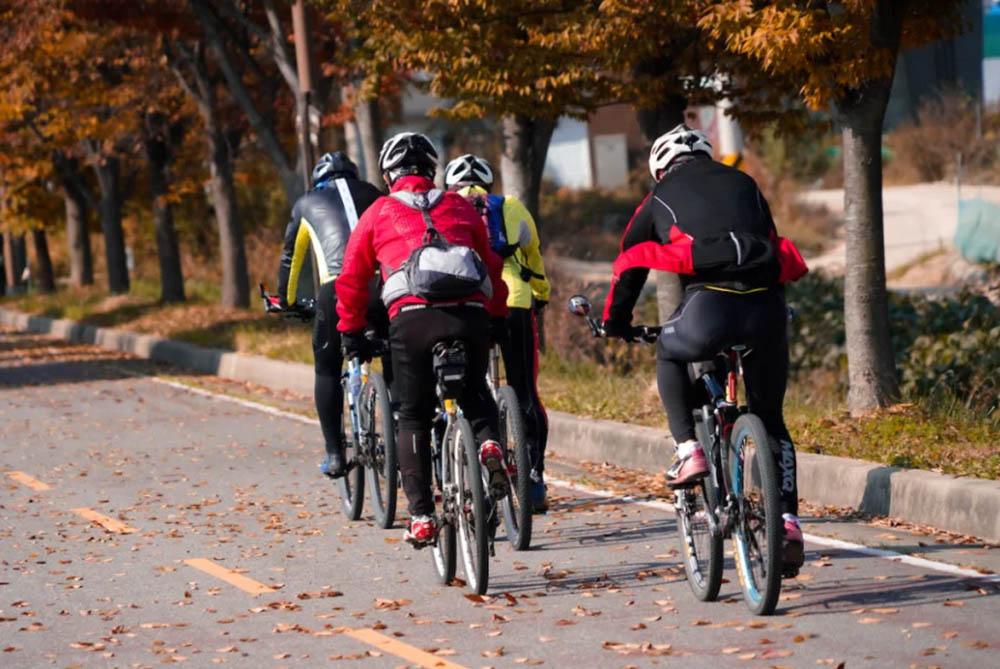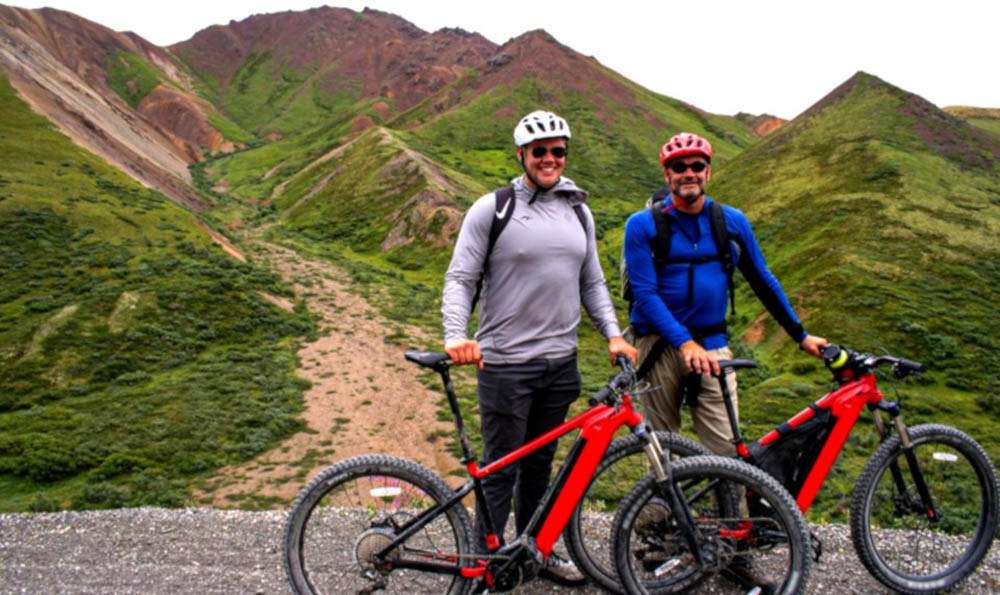What is a 21-speed e-bike and how does it work?
Most e-bikes are equipped with gears to help the rider tackle a variety of terrains. Common gears on e-bikes include 1, 3, 7, 18 and 21 speeds, with each speed referring to a different combination of gears. By changing the combination of these gears, you can make pedalling more or less difficult.
Once you understand the gearing on a 21-speed electric bike, you’ll be able to enjoy longer rides and therefore less fatigue. So, let’s get started – we’ve explained everything you need to know about 21 speed ebike gearing!
What is a 21-speed e-bike?
A 21-speed e-bike can be any type of e-bike with 21 gears, whether it’s a road e-bike, mountain e-bike, commuter e-bike or hybrid e-bike.
According to e-bike manufacturers, a 21-speed e bike typically offers a faster, smoother ride than a lower speed e-bike. But with that said, its various gears do allow you to ride at slow speeds, full power, or anything in between.
For more technical information, the 21-speed ebike has 3 front gears and 7 rear gears. The front cogs are located in a straight line with the pedals, called the chainring. The rear gears lie in a straight line with the axle of the rear wheel, collectively known as the cassette flywheel, and individually known as the cogwheel (gear).
Large and small cassette discs are suitable for extreme environments: big hills or fast road riding. According to e-bike manufacturers, shifting your e-bike to extra-low gears makes going uphill easier, and shifting to high gears makes going downhill faster. (We will discuss this in more detail below.)
Do not use a small disc with the smallest gear in the flywheel or a large disc with the largest gear. (In layman’s terms, this is called “cross-chaining.”) This will cause the chain to angle too much, increasing wear and tear on the e-bike and increasing the risk of the chain jumping off the cogs while riding.
The 5 main components of a 21-speed e-bike
Before going any further, it’s helpful to understand all the components of a 21-speed e-bike. Here are the five main components:
Flywheel: A set of gears (cogs) located on the rear wheel of the e-bike.
Chain: The metal linkage that connects the front chain ring to the flywheel so that when you turn the pedals, the wheel also turns.
Crankset: The part of the e-bike that connects the pedals. It transfers power from the rider to the rear wheel. 21-speed electric e-bikes usually have three discs on the crankset.
Shifter: A mechanism controlled by a shifter (below) that moves the e-bike chain from one cog to another. Most e-bikes have a rear derailleur at the rear, but not all e-bikes have a front derailleur.
Shifter: A control located on the handlebars of your e-bike (via a cable that operates the chainstay) that allows you to change gears.
How to use a 21-speed e-bike
It’s hard to enjoy riding an e-bike when you can barely move the pedals or when the pedals spin too fast for your feet to keep up. Adjusting the gearing on your e-bike allows you to maintain your preferred pedalling rhythm at any speed.

The chainstay is used to switch between gears. The chainstay is controlled by a shifter mounted on the handlebars. Typically, the left shifter controls the front brake and front derailleur (front chainring), and the right shifter controls the rear brake and rear derailleur (rear chainring). The shifter changes the position of the toggle, causing the chain to derail from the current cog and jump to the next larger or smaller cog. Continued pedal pressure is required to change gears.
The lower gears (first through seventh) are best for climbing hills. The lowest cog on an e-bike is the smallest chainring up front and the largest cog on the flywheel. Downshift to this position when you want the easiest pedalling with the least resistance.
High-speed gears (gears 14 to 21) are best for going downhill. The highest gear on an e-bike is the largest chainring at the front and the smallest gear on the flywheel. Upshift to this position when you want to pedal the hardest and with the most resistance – ideal for accelerating downhill.
How to choose the right gear for your 21-speed e-bike
Because 21-speed e-bikes come in a variety of gears, you’ll have to experiment with which particular gear suits you best on different types of terrain – after all, everyone is different and no one has the same preferences.
Choose the gear you feel comfortable in. Start with the middle disc and medium gear in the flywheel, and on a 21-speed electric e-bike the fourth gear. While continuing to pedal, make small adjustments to the left shifter to adjust the flywheel.
To speed up the cadence, select a smaller cog, such as cog 5, 6 or 7 on a 21-speed e-bike. To slow down the cadence, select a larger gear, such as number one, two or three. If gear number one or seven is not fast or slow enough for you, move the flywheel back to gear number four and adjust the chainring. Again, keep pedalling while shifting gears.
21-Speed E-Bikes vs. 18-Speed E-Bikes
You guessed it, 18-speed e-bikes have 18 gears (instead of 21). They have a variety of gear ranges, which can help you traverse many different types of terrain with ease – although the gear range isn’t as wide as that of a 21-speed electric e-bike.

According to Popular Cyclist, both 18- and 21-speed e-bikes have three discs in the front, but 18-speed e-bikes have six gears in the back, while 21-speed e-bikes have seven. However, 18-speed e-bikes can also be equipped with two discs in the front and nine gears in the rear. The latter option tends to offer higher speeds and power than the former.
Parts on a 21-speed e-bike may be interchangeable with those on an 18-speed e-bike, but this is not always the case, so check the e-bike’s owner’s manual or your local e-bike shop before making any changes.
Tips for easier gear changes
To make your gearing work for you, shift to an easier gear when you approach a climb or start to tire. If your cadence starts to drop for any reason, take this as a sign to switch to an easier gear. On the other hand, use the flats, downhills and tailwinds to shift into a harder gear. This will allow you to increase your speed while maintaining the same cadence and level of movement.
Here are some more tips to make the most of your gear changes.
1. Anticipate gear changes in advance
Start thinking about shifting gears before you reach an obstacle, such as a hill. If you wait until you’re halfway up a hill and then barely press the pedals, shifting gears will be difficult. Gently press the pedal a few revolutions while shifting gears. Too much pressure will prevent the cogs from shifting, or it will cause the chain pawl to skip gears, resulting in wear between the chain and the pawl.
2. Don’t forget to shift into an easier gear when approaching a stop
If you’re driving on a flat surface or have a tailwind pushing you forward, then you’re probably using one of the hardest gears. This is fine until you stop and try driving in the same gear again. Lowering a few gears as you approach a stop makes it easier to regain power
Have any questions? Drop us a line below! Let our well-designed City Electric Bike and quality outdoor accessories take you on a journey to explore nature and unleash your passion for unlimited adventure!
 Shuangye ebike
Shuangye ebike
